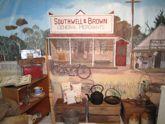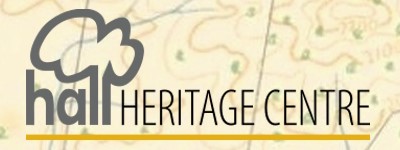Edwards, Mary
Family background
Mary Ann Edwards was born in 1875 in Yass, one of several children to blacksmith James Edwards and Sarah Jane nee Hackett. The family lived in various country towns during Mary's childhood including Gundagai and Narrandera, but by 1891 had settled in Sydney.
Summer Hill Public School
Mary began her teaching career in February 1891, aged 15, with appointment as Pupil Teacher in the Infants Department of Summer Hill. Her appointment was confirmed after five months with a report stating that her conduct was good, her efficiency and usefulness 'moderate', and that she had had no absences despite having to walk 1½ hours to and from school each day. (Fortunately, a new tramline soon opened that significantly reduced her daily trek). She nonetheless failed to pass her first annual exam and was cautioned over this. She fared better in subsequent years despite contracting Typhoid Fever at one stage, and by 1895 had been promoted to Pupil Teacher Class I, enabling her to sit an examination for admission to the Training School, which she passed but failed to gain a scholarship. In early 1896, now aged 20 and recognised as an efficient teacher, she applied for a position in a small school, but was informed that she would be appointed 'in her turn' as there were many applicants for such positions.
Stanmore Public School
In early 1897, Mary was removed to Stanmore by request, this school being only a short walk from her home. (A younger brother concurrently began as Pupil Teacher at nearby Petersham). A year later Mary required two weeks leave due to 'Dental Caries & Nervous Debility', her principal teacher reporting that she was 'completely unstrung and unfit for duty'. She evidently recovered and later that year received a short-term position as substitute teacher at Clareval Public School near Stroud.
Breelong West Provisional School
In January 1899 Mary, now 23, was appointed to Breelong West, a sparsely populated area near Gilgandra, travelling from Sydney to Dubbo by overnight rail, then onwards by coach. The narrow school building at Breelong West, which accommodated an average of 14 pupils, was soon identified as needing improvements particularly the addition of verandas to reduce the heat. While often such work could be completed by local residents within a reasonable timeframe, a lack of tenders meant the project waited in abeyance for over twelve months. Meanwhile, Mary was unsuccessful at a classification exam and her request for an allowance to compensate for the locality's remoteness was denied, so she presumably welcomed the news of a transfer after a year.
Woodfield Provisional School
In January 1900 Mary commenced duty at Woodfield (Amungula). Shockingly, six months after her departure from Breelong West, her replacement, a 20-year-old woman who had just completed Pupil Teacher training, was murdered along with several members of a local family, which must have been distressing news for Mary ['Sydney Morning Herald', 23 July 1900, p. 7]. Meanwhile, after nine months at Woodfield Mary asked for removal 'on account of the very bad accommodation' and poor food that left her health 'greatly impaired'. The local inspector, while considering Mary's representations as 'somewhat exaggerated', did concede there was someone in the house where she resided who was 'at times under the influence of drink', so suggested she be removed when a vacancy became available. Mary's health deteriorated at this point and she was granted four weeks leave for 'Gastric Catarrh', recuperating in Sydney at her family home. Upon her return to Woodfield, she was informed that 'a very respectable resident' could provide her with lodgings so she remained in situ. Within six months increased enrolments saw Woodfield converted to a Public School and Mary's position became temporary as she lacked sufficient qualification, the local inspector suggesting an exchange that would remove her and bring a qualified teacher to Woodfield. He also remarked of Mary 'she is not well fitted, by temperament and physical stamina, for a country school but she is an earnest, skilful teacher'.
Lithgow Public School
In July 1901 Mary took up duty in the Girls Department at Lithgow, asking after a few months to be appointed closer to her Sydney home but there were no vacancies. A year later she married farmer John Thomas Mawbey, eldest son of the family involved in the Breelong tragedy. She then continued to teach under her maiden name, perhaps due to ongoing public interest in the name 'Mawbey'.
Wallsend & Wickham Public Schools
In January 1903 Mary was appointed to Wallsend in the Newcastle district for a short while, then Wickam in the Maitland area where she remained until retiring in September 1903, having completed 12 ½ years' service overall.
Later life
In the course of the next two decades Mary and her husband had nine children. They initially lived in the Maitland district then moved to Dapto. In 1913 her husband was employed by NSW Railways as a fettler, and a year later Mary also gained employment as the Dapto railway gatekeeper, a position she held for 19 years. Her husband eventually completed 30 years as a fettler, before retiring on an annual pension. Mary seemingly lived in Dapto until her husband's death in 1952, after which she lived in Nowra then Wollongong until her own death in 1957, aged 82. She was buried beside her husband in West Dapto Catholic Cemetery.
[Biography prepared by Joanne Toohey, 2025. Sources include NSW school teachers' rolls 1868-1908, NSW school and related records 1876-1979, historic newspapers, NSW births, deaths and marriages index, NSW Probate records, NSW Railway Personal History cards, and 'Early Education and Schools in the Canberra Region', (1999) by Lyall Gillespie.]
Schools
- Amungula
01/1900 - 06/1901

